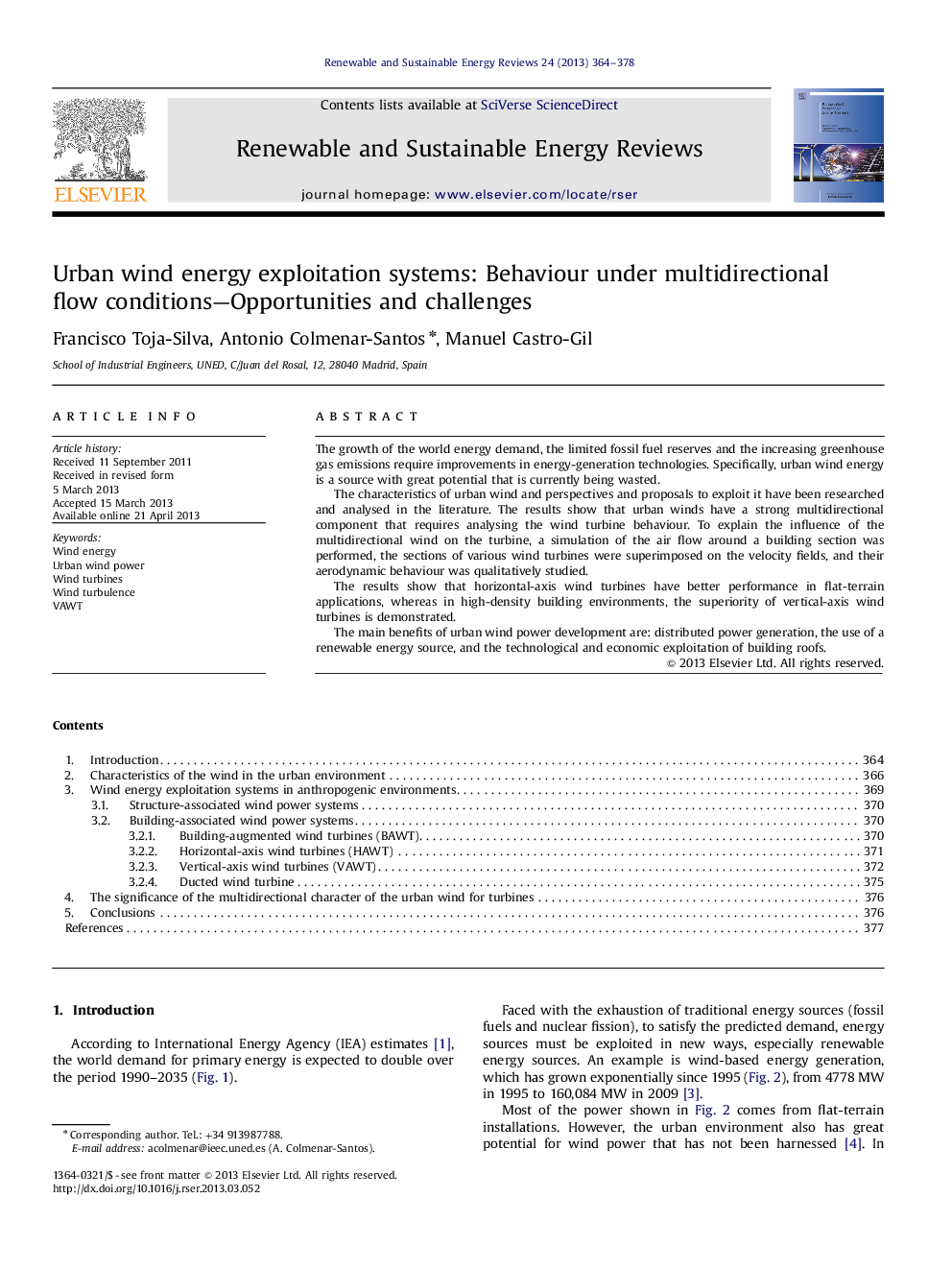| Article ID | Journal | Published Year | Pages | File Type |
|---|---|---|---|---|
| 1750227 | Renewable and Sustainable Energy Reviews | 2013 | 15 Pages |
The growth of the world energy demand, the limited fossil fuel reserves and the increasing greenhouse gas emissions require improvements in energy-generation technologies. Specifically, urban wind energy is a source with great potential that is currently being wasted.The characteristics of urban wind and perspectives and proposals to exploit it have been researched and analysed in the literature. The results show that urban winds have a strong multidirectional component that requires analysing the wind turbine behaviour. To explain the influence of the multidirectional wind on the turbine, a simulation of the air flow around a building section was performed, the sections of various wind turbines were superimposed on the velocity fields, and their aerodynamic behaviour was qualitatively studied.The results show that horizontal-axis wind turbines have better performance in flat-terrain applications, whereas in high-density building environments, the superiority of vertical-axis wind turbines is demonstrated.The main benefits of urban wind power development are: distributed power generation, the use of a renewable energy source, and the technological and economic exploitation of building roofs.
